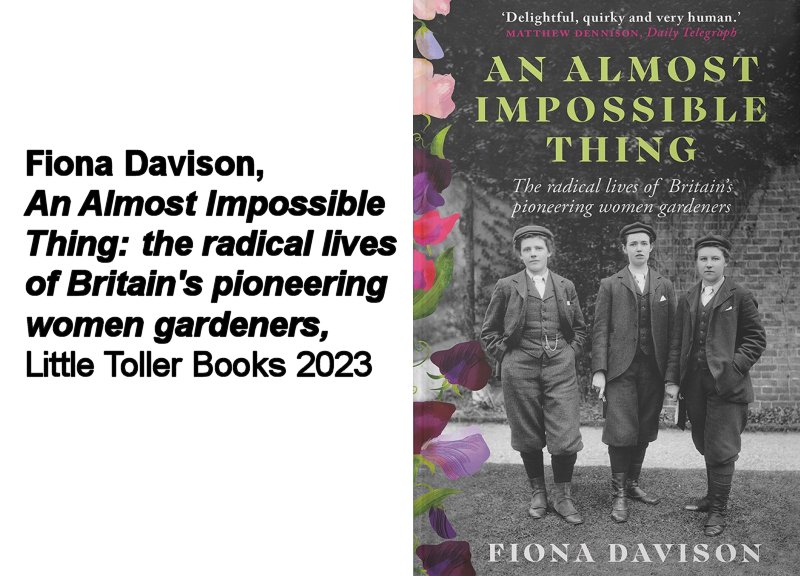Professional gardening has long been a man’s world. The title of Fiona Davison’s book comes from a letter written by the retiring Director of Kew Gardens, Joseph Dalton Hooker in 1906. His unambiguous advice to Miss Symonds who fancied a job tending plants was to forget it. Yet women did enter the world of horticulture in the early decades of the twentieth century and Davison follows six of them as they make inroads into this male bastion.
Swanley Horticultural College, not far from CABAHS home territory, provided an educational route. The College accepted its first female student, a Mrs Benison in 1891, two years after it had opened. Several Swanley students excelled in the Royal Horticultural Society examinations and went on to enjoy successful careers. Madeline Agar, from a well-to-do family worked as a designer for the Municipal Public Gardens Association and some of her designs can still be seen around the capital. Gertrude Cope had to win a scholarship from Essex County Council. Their faith paid off as Gertrude excelled at the College and went on to win a prestigious place as a ‘boy’ apprentice gardener at the Royal Botanic Gardens Kew.
Her other four other women gardeners who between them organised an agricultural college, became head gardener at an aristocratic Scottish estate and set up nursery businesses. Olive Cockerell, a member of a prominent family involved in the Edwardian Arts and Crafts movement, set up home with Helen Nussey, a former social worker associated with the social reformer Octavia Hill. Together they supported themselves by growing and selling vegetables adopting a gardening system developed in France which they spent a year studying and which they later shared by taking in students. Sadly their enterprise folded when Olive became ill. Nevertheless their smallholding in Sussex reflected a wider movement searching for the simple life which many perceived gardening could offer. The book describes their struggles with the weather and with the practicalities of getting produce to market at the right time and in the correct amounts.
Davison weaves together the lives of her six women in lively prose enriched by an impressive array of archival and printed sources. As Head Librarian at the Royal Horticultural Society, she has much material on her doorstep but the book also draws on the papers of the Swanley College in the Hextable Heritage Centre. The struggles her women encountered indicate their commitment to gardening not only as an income-generating occupation but also as a way of life, offering the satisfaction of being close to nature in the open-air. In the opening decades of the twentieth century middle class women in particular enjoyed new opportunities outside of the home. Horticulture was one of them. But, as Davison shows, those opportunities came with challenges and not a few obstacles.
Stella B
If you read a book that would be of interest to our members, please think about writing a review and sending it to garden@cabahs.com and it could become a post like this.
